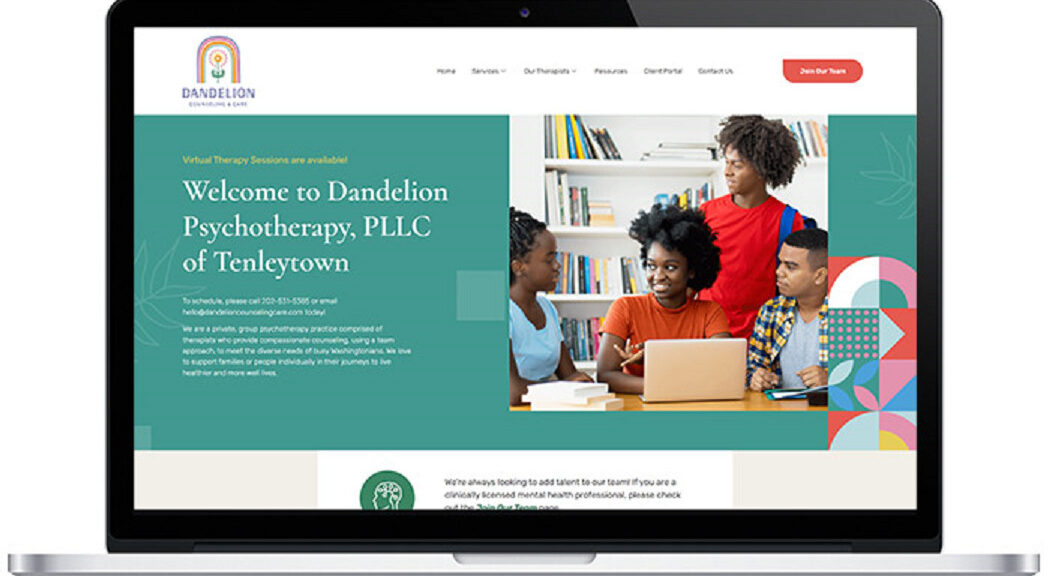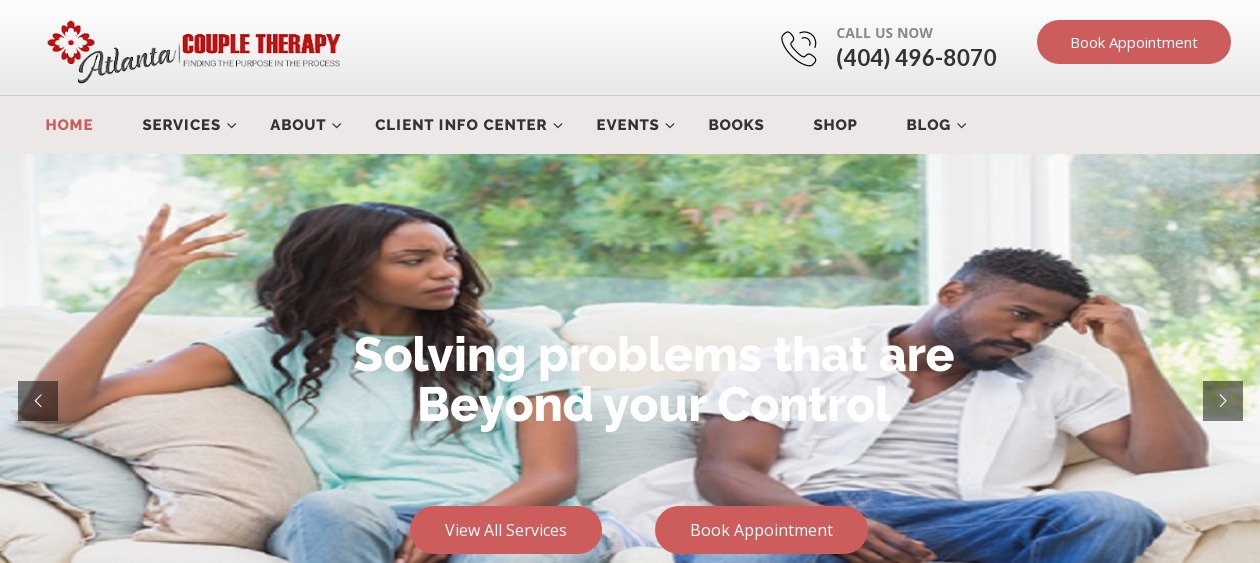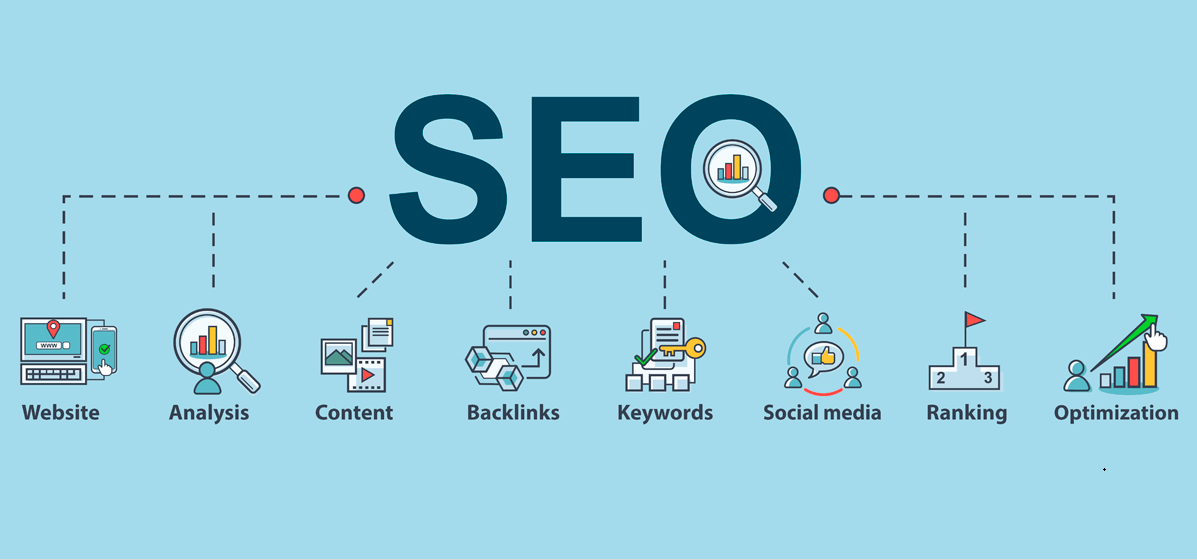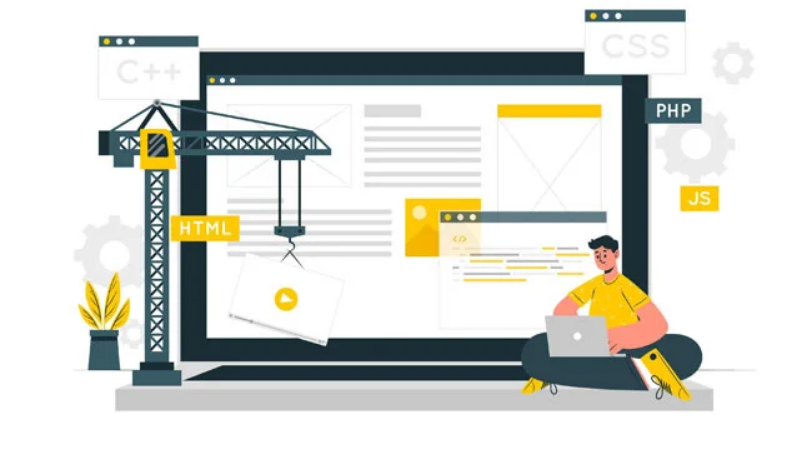Developing an attractive and informative therapist website design homepage & other pages for your private practice or relationship coach business is so essential, it cannot be ignored. In order to establish trust and create the ‘wow’ factor with potential clients, the design has to look eye-pleasing, organized, and easy to use.
Ease-of-use is the top priority as far as the website design concerned. Next focus is having a quality logo, high resolution banners / images, unique informative & easy to read content. What the website is about must be clear from the start. The key elements below will help you create a therapist website design that will attract local clients to your mental health or counseling practice:
Therapist Website Design Chronicles
1. Logo / Header:
- Branding is extremely important. So, design a professional & high resolution logo that represents your private practice.
- Design a header that contacts the logo with business name and tagline (see AtlantaCoupleTherapy.com for example).
2. High-Resolution Banners / Images:
- Upload high-quality pictures that convey your practice message. Should be warmth and professional.
- Contemplate using soothing, calm, and gender neutral graphics that let users know your therapy space welcomes people of all walk of life.
3. Welcome Message / Introduction:
- Your homepage should include an introduction / welcome message that let potential clients know exactly what your business is about. Keep it brief because you can give more details about the practice in the ‘About’ page.
4. About Us:
- Add a section that highlights yourself, staff members with qualifications & experience. Equally important is approaches used for therapy. Tell your potential therapy clients what they should expect and which approaches you will use to solve their issues.
- Include professional photos of yourself, staff members, and/or pictures of your location even if you’re doing virtual therapy.
5. Your Services:
- Create a page that lists all the services offered in the practice. Atlanta Couple Therapy, for instance, provides: Couples, Individual, Group, Pre-Marital therapy/counseling. Additionally, the practice does relationship assessments, consulting and training (https://www.atlantacoupletherapy.com/services/).
- Be sure to add a brief description for each service.
6. Specializations:
- Highlighting your or therapists; if the practice has multiple, specializations or expertise areas are key elements of a standardized therapist website. Create a page named either “Our Team” or “About Me” if a single therapist / psychologist practice.
- The purpose is the help potential clients determine if you or your practice is the right match.
7. Contact Us / Reach Out:
- Not every potential client will fill out your online form to setup an appointment. Although we recommend all therapist websites give users the ability to schedule online appointments, we also urge you to list all contact information on this page. It should include: phone number, email address, physical address (if necessary), and contact form.
- Don’t forget that call-to-action button. Should be in every page of the site. You will see a bright color “Book Appointment” button on every page of https://www.atlantacoupletherapy.com/. Referrals often don’t like to dig through a website. They often simply want know how to schedule that appointment.
8. Physical Location / Hours:
- A lot of therapist went virtual during Covid-19 and a great number of them decided not to return to the office. If you have an office location, list the full address. Also put it on a map for clearer direction. If your practice only accepting virtual clients, make it clear. Should be very visible on the homepage and every other pages.
- Add visible office hours. Regardless the session will take place in a physical location or online (virtual).
9. Client Reviews / Testimonials:
- You can create a separate page to highlight all the great things pass or present patients are saying about your practice. However, it’s not necessary. You can feature them prominently throughout the pages of your site.
- Ask permission to use first name for authenticity and credibility. Don’t use client pictures. Instead add your logo in place of a client’s image.
10. Resources / Blog
- Consider adding both; a blog and resource page. The resource page may consist a links & phone to suicide prevention, for example. The blog? Well, Google gives dynamic websites propriety over static ones (read differences here). As a result, posting content regularly to your website will trigger Google. They will visit your private practice website when new content is published in order to index them. That way you will get more targeted traffic/visitors to your website.
- In addition to feeding the beast, your providing valuable information to your website visitors.
11. Privacy, Confidentiality, No Surprise Act
- Adding privacy & confidentiality statements to your therapist website design; in the form of separate pages are essential. However, the No Surprise Act; made into laws in 2021, then revised in 2022, is a requirement for all medical professionals issuing a bill to clients. YES, mental health professionals such as: therapists, psychologist, relationship coaches are also required to inform their clients. To learn more about the act, you may visit www.cms.gov/nosurprises or call 1-877-696-6775.
- Tell clients how you will handle or secure private information revealed to your practice, yourself and staff members. Confidentiality is not only important, but also required in this traditional field.
12. Charges: Insurance or Cash Fees
- You don’t want your client to find out that your practice only accepts ‘cash’ or ‘insurance’ only after they show up at your office or virtual session; do you? Worst yet, they expect to pay $50 out-of-pocket co-pay, just to learn you only take cash. So clearly outline your payment methods and fee structure.
13: Social Media Profiles:
- Plugin all your social media profile links on the website.
- It gives clients more medium of communication to reach or community with your practice.
14. Mobile-Ready or Responsive:
- Test your website to verify it’s mobile-friendly. That all pages nicely fit in all devices; regardless the size and configuration. There are a bunch of free tools online you use to test.
15. SEO-Ready:
- There are two types of therapist website designers/developers: Regular & SEO-ready. A regular site designer does not design your website with search engine optimization or SEO in mind. He or she will propose to make the site SEO-ready after the design is done…for an extra fee.
- When writing content for a website, keywords research must be done. Those keywords will be injected all over the website’s content in order for Google to rank the site for those keywords. For instance, if you type ‘black therapist in Atlanta Georgia‘ on Google, you will notice one of our clients ranks high for that long-tail keyword. We did that! Then check the website and you will see those words all over it.
Conclusion:
There you have it, a complete guide to create a therapist website design for counselors, psychologists or relationship coaches your clients will fall in love with. Be precise, clear and jargon-free. Reject all urge to design or develop a website you like.
Instead, find out what your clients want and address them directly with your content, design and charms. Update your practice website regularly to reflex changes. Publish at least 3 blog post per months giving tips, how-tos, tutorials or just expert opinion on current matters.
If this sound overwhelmed to you or you would rather concentrate of providing great therapy services to your clients instead of spending your valuable time designing a website, please don’t hesitate to schedule a 30-minute FREE consolation session with us so we can discuss how we can assist.









